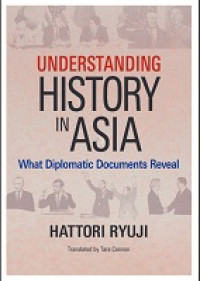
Text
E-book Understanding History in Asia: What Diplomatic Documents Reveal
Penilaian
0,0
dari 5The twentieth century has been called a century of war. Wars and colonization leave deep chasms between countries. In the case of Japan, these frictions have manifested themselves as historical issues. The history since World War II has also been a history of tyring to overcome the hostility surrounding these issues. Since the end of the war there have been various attempts at reconciliation, and indeed, periods in which Japan has enjoyed good relations with China and also with South Korea. Despite that, historical issues have overheated in the twenty-first century, and their effects may extend beyond Japan's relations with China and South Korea to impact its relations with the United States, Southeast Asia, and Europe.This title examines the first, in the introduction, the period from the Tokyo Military Tribunal to the normalization of relations between Japan and South Korea and between Japan and China. In chapter one, it explores an issue that arose regarding Japanese history textbooks and a statement released by Japanese Chief Cabinet Secretary Miyazawa Kiichi, South Korean President Chun Doo-hwan’s visit to Japan, and “mutual trust” between Japanese Prime Minister Nakasone Yasuhiro and Chinese Communist Party General Secretary Hu Yaobang. Chapter two reveals the view of the Chinese side and behind-the-scenes negotiations that evolved around Prime Minister Nakasone's official visit to Yasukuni Shrine. Chapter three delves into the wartime "comfort women" issue, including Japanese Prime Minister Miyazawa Kiichi’s visit to South Korea and statements made by Japanese Chief Cabinet Secretary Kato K?ichi and Japanese Chief Cabinet Secretary K?no Y?hei. Chapter four takes up the statement released by Prime Minister Murayama Tomiichi on the occasion of the 50th anniversary of the end of World War II and discusses how the statement has become a kind of common language within Japanese politics. Chapter five considers issues that have arisen in the twenty-first and the epilogue provides observations about the prospects for these areas in the future.
Ketersediaan
Informasi Detail
- Judul Seri
-
-
- No. Panggil
-
327.2 HAT u
- Penerbit
- : Japan Publishing Industry for Culture (JPIC)., 2019
- Deskripsi Fisik
-
270 halaman, ilus.
- Bahasa
-
English
- ISBN/ISSN
-
9784866580548
- Klasifikasi
-
327.2
- Tipe Isi
-
text
- Tipe Media
-
computer
- Tipe Pembawa
-
online resource
- Edisi
-
-
- Subjek
- Info Detail Spesifik
-
-
- Pernyataan Tanggungjawab
-
Ry?ji Hattori
Versi lain/terkait
Tidak tersedia versi lain
Lampiran Berkas
Komentar
Anda harus masuk sebelum memberikan komentar
 Karya Umum
Karya Umum  Filsafat
Filsafat  Agama
Agama  Ilmu-ilmu Sosial
Ilmu-ilmu Sosial  Bahasa
Bahasa  Ilmu-ilmu Murni
Ilmu-ilmu Murni  Ilmu-ilmu Terapan
Ilmu-ilmu Terapan  Kesenian, Hiburan, dan Olahraga
Kesenian, Hiburan, dan Olahraga  Kesusastraan
Kesusastraan  Geografi dan Sejarah
Geografi dan Sejarah